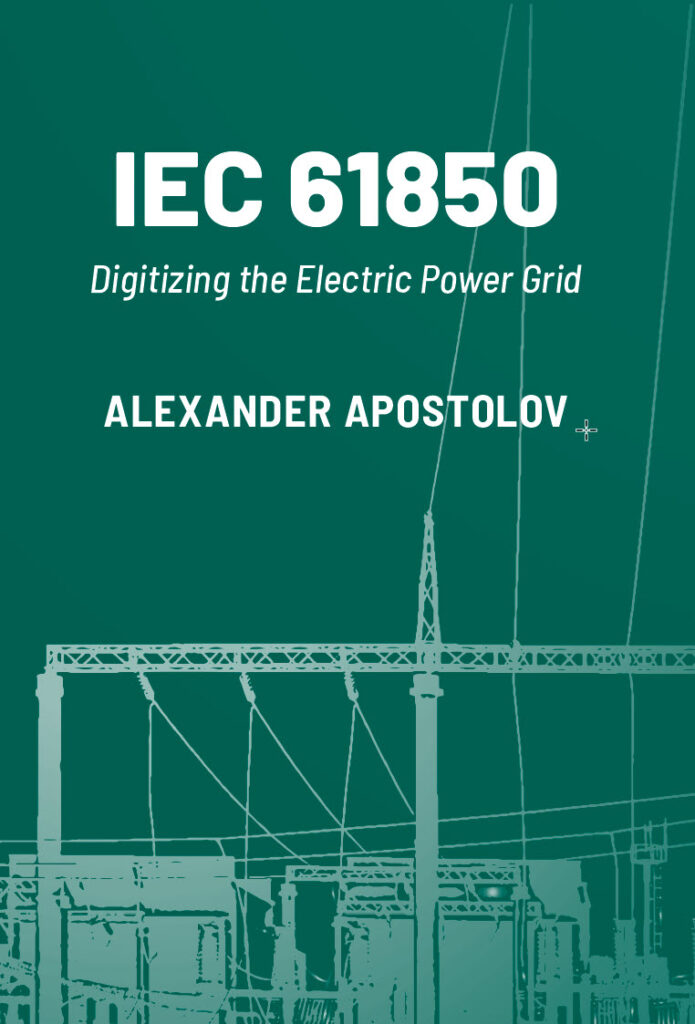by Alexander Apostolov, USA
1st Edition, 2022

The electric power industry, like the rest of the world, is going through a period of a dramatic digital transformation of all aspects of life. While this may not be a problem for many people that grew up with a smartphone or tablet in their hands, this is not the case for the rest that were used to individual devices with manual controls. The challenges for many specialists in the field of protection, automation and control are quite similar. For more than a century electric power systems have been protected by electromechanical or solid-state devices with no communication capabilities. But starting in the last two decades of the 20th century this has been changing by the introduction of multifunctional intelligent electronic devices. The development of the IEC 61850 standard is leading to the next stage of the evolution of protection, automation and control systems. For many PAC specialists communications and object – oriented engineering are something unfamiliar and because of that uncomfortable to use. That is why there has been a need for a book that will help people unfamiliar with this technology to get a better understanding of the underlying concepts of digitization and digitalization and how the standard can be used to realize the digital transformation of the electric power grid.
This is the goal of the book recently published by Artech House and authored by Alexander Apostolov.
The more than 300 pages content of the book is presented in 18 chapters.
The first two chapters introduce the concept of the smart grid and its functions, as well as what digitizing is and why we need it.
The next two chapters describe the requirements for IEC 61850 and talk about the history of its development. Chapter 5 provides a brief description of the IEC 61850 standard parts and technical reports and gives the information about the status of their development.
The next two chapters are concentrated on introducing substation communications basics and technology fundamentals that can help the reader better understand the standard and its applications, including information about XML, UML, ASN.1 and others.
Considering that an important part of the digital transformation is virtualization based on object modeling principles, this is the focus of Chapter 8. How these principles are implemented in the IEC 61850 standard and model details are described in the following chapter.
GOOSE communications and different examples of their applications are the focus of Chapter 10, while Chapter 11 does the same for Sampled Values (SV) communications and their applications.
The next chapter looks at the impact of the IEC 61850 standard on the engineering of PAC systems and describes the System Configuration Language (SCL), its components and applications.
Time plays a very important role in protection and control systems, and because of that its modeling and applications are the focus of Chapter 13. Testing of IEC 61850 devices and systems is very different from conventional hardwired systems. Chapter 14 describes in detail the different testing related features of the standard and how they can be used to provide virtual isolation in energized substations.
The following chapter defines digital substations as the building blocks of the digital transformation of the grid, as well as their architectures and evolution.
Cyber security is one of the main concerns of the industry related to the digitization that exposes the grid to attacks. Chapter 16 looks at the different attack vectors and describes different approaches for intrusion detection and how to prevent the impact of an attack.
Microgrids and integration of renewable distributed energy resources are the focus of the next chapter.
The last chapter of the book analyzes different possible migration strategies for the digital transformation.
The wide range of topics that are covered in the book provides the basis for a better understanding of all the different aspects that need to be considered and understood for the successful digitization of the electric power grid and can help significantly improve its reliability, security and efficiency. The book can be a very useful tool for many specialists in the protection, automation and control community, as well as for students and young engineers that are just entering our field.
The author of the book received MS degree in Electrical Engineering, MS in Applied Mathematics and Ph.D. from the Technical University in Sofia, Bulgaria. He has 49 years’ experience in power systems protection, automation, control and communications working for engineering companies, utilities and manufacturers, as well as teaching many seminars and workshops and lecturing at universities around the world. He is IEEE Life Fellow and CIGRE Distinguished Member and has received many awards. He has been actively involved in the development of IEC 61850 for more than 25 years.
EC 61850: Digitizing the Electric Power Grid
By Alexander Apostolov
Publisher: Artech House
ISBN-13 9781630818845








